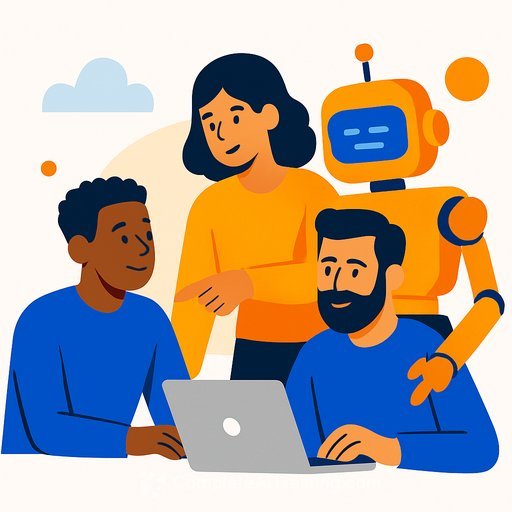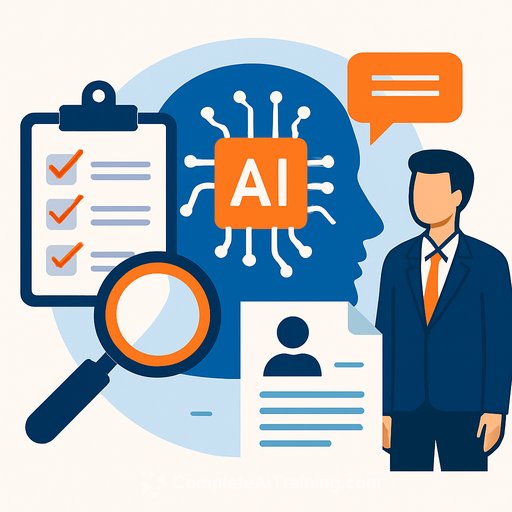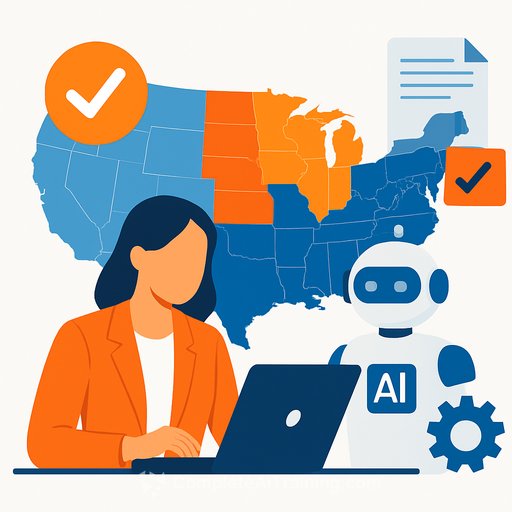Leadership AI Must Work For People, Not The Other Way Around
The talent crunch is real. Research has projected a shortage of more than 85 million skilled tech workers by 2030, with up to $8 trillion in lost annual revenue if we miss it. The signal is clear: we won't hire our way out. We need tools that amplify human capacity-without burning people out.
That's where "leadership AI" comes in-systems that support decisions, speed up work and keep humans in control. If AI doesn't make work easier, safer and fairer, it's the wrong implementation.
Why HR Should Care
- Demand outpaces supply: open roles linger, projects slip and teams stretch thin.
- Burnout rises: more admin, more context switching, less focus on meaningful work.
- Quality suffers: rushed decisions create downstream costs in hiring, development and retention.
AI can help, but only if it serves people first-clear guardrails, transparent data use and real performance gains.
People-First Principles For AI At Work
- Co-pilot, not autopilot: AI drafts, humans decide. Keep a human in the loop for high-impact steps.
- Consent and clarity: explain what data is used, who can see outputs and how models learn.
- Fairness by default: run bias checks on training data, prompts and outcomes; track drift over time.
- Privacy and compliance: minimize personal data, log decisions, and meet regional requirements.
- Clear red lines: define tasks AI will not do (final hiring decisions, sensitive medical guidance, etc.).
- Accessible training: give every employee a baseline AI skill path and safe practice space.
- Measure impact: time saved, error rates, sentiment and adoption-not vanity metrics.
High-Value HR Use Cases You Can Run Now
- Workforce planning: forecast skills gaps, attrition risk and hiring needs with predictive models.
- Recruiting ops: structure job requirements, screen for must-have skills and generate interview guides.
- Internal mobility: map employee skills to open roles, surface stretch projects and mentors.
- Learning recommendations: personalize training plans tied to role, skill level and business goals.
- Knowledge support: policy Q&A, new-hire FAQs and quick drafts for recurring HR communications.
- Case triage: route tickets, summarize context and propose responses for HR service desks.
- Performance support: convert goals into measurable KPIs and draft fair, consistent review language.
30-60-90 Day Plan For HR Leaders
- Days 0-30: Pick three painful workflows (e.g., req intake, L&D curation, policy Q&A). Inventory data, write a simple AI use policy, define success metrics (time saved, quality, risk).
- Days 31-60: Run controlled pilots with small teams. Provide micro-trainings and office hours. Capture prompts, edge cases and failure modes. Compare against baseline.
- Days 61-90: Scale what works, pause what doesn't. Add guardrails, build playbooks and share wins. Bake AI skills into onboarding and manager enablement.
Guardrails That Keep Trust
- Every AI output has an owner. If no one reviews it, it doesn't ship.
- Keep sensitive data out unless there's a documented legal path and business need.
- Version prompts and templates. Treat them like products with updates and changelogs.
- Run quarterly fairness and quality checks; publish results internally.
Metrics That Matter
- Cycle time per workflow (before vs. after).
- Quality score (accuracy, completeness, compliance) from spot checks.
- Employee sentiment and adoption by role.
- Bias indicators and drift over time.
- Incident count: privacy, security, compliance.
Upskill Your People
Skills are the bottleneck. Give teams short, practical training paths tied to their job. Start with prompts, review practices, data privacy basics and your policy.
If you need structured options, see curated AI programs by job role at Complete AI Training or explore recognized certification tracks. Keep it simple and hands-on.
Helpful References
- Global talent shortage projections: Korn Ferry
- Risk and governance guidance: NIST AI Risk Management Framework
Bottom Line
AI should remove friction, not add fear. Start small, keep humans in charge and measure what matters. If it makes work better for people, performance will follow.
Your membership also unlocks:






